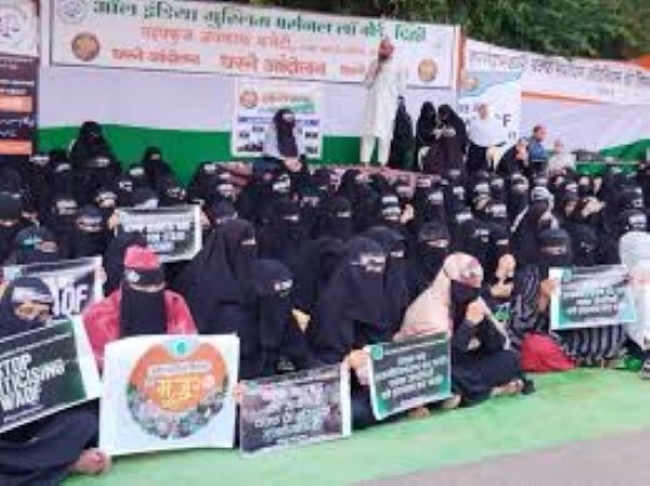“Tokenism is not empowerment, rather it’s a silence wrapped in visibility.” It’s a sharp critique of society when women’s participation is just for the sake of representation. While each law tries to deal with ‘equality’ in its own ways, the real decision-making power is often missing. The relationship between waqf law and women’s rights reveals deep tensions in legal inclusion and community control. The latest amendment of Waqf Law 2025 has been making rounds that make us think about what and how much women really yield power.
Symbol or Stakeholder? Muslim Women’s Rights in Waqf Law 1995
While the Waqf Act 1995 contained provisions pertaining to women’s participation, it is widely clear that the inculcation of such clauses was just for equality’s sake. The ground reality is harsh and women’s voices often remain unheard.
In the 1995 act, a woman could dedicate a property if she owned it along with some other conditions. There is no explicit bar on women being ‘mutawalli’ as per the law. Yet some Islamic schools of law don’t allow women to be one. Thus, Waqf Law and women’s rights in India becomes opposite to each other. Women are rarely appointed due to social biases. This again raises the question of women’s participation for the name sake only.
Another significant clause of the law of Waqf was to make women beneficiaries of the waqf properties. Many Waqfs have been created specifically to support widows, girls’ education, or women’s shelters. However, problems started to materialise such as poor documentation, untraceable beneficiaries, and male-centric administration ignores women’s needs.
Insurmountable challenges arose which barred Muslim women’s inclusivity in the Waqf law. The restrictions and the social stigma around women in religious/public roles have been ever-present. There was also a lack of awareness about legal rights. The intersection of waqf law and women’s rights in India reveals a complex story of legal ambiguity and underrepresentation. Numerous women are unaware of the stipulations of the law. Despite the legal possibility, we can see male-dominated Waqf Boards which makes us question whether this is law or good ol’ patriarchal setup.
Even Justice Sachar committee reported that there was mismanagement in waqf boards and there was barely any women’s participation. Very rarely were any women appointed as mutawalli because it could challenge men’s position and dominance in that sphere.
Women’s Rights and Roles in the Waqf (Amendment) Act 2025
Taking into account, the faults and loopholes of the Waqf law 1995, the parliament tabled the Waqf bill earlier this year and it was finally passed on April 5 2025. As soon as the bill became an act, it was supported and criticised equally due to its religious renderings.
While the updated Waqf law aims to ‘save Muslim women’ from the clutches of patriarchal clutches, it’s yet to determine how much change will it really make when it comes to execution. After all, the Waqf Law and women’s rights are complementary for the overall representation of women in power spheres.
1. Participation in The Waqf Boards
The Waqf (Amendment) Act, stipulates the inclusion of Muslim women in both the Central Waqf Council and State Waqf Boards. Specifically, the Act requires that at least two Muslim women be appointed as members of these bodies. This provision aims to enhance gender inclusivity. It also ensured that women’s perspectives are represented in the management and administration of Waqf properties.
2. Protection of Inheritance Rights
The Act introduces safeguards to protect the inheritance rights of women in the context of family Waqf (Waqf-alal-aulad). Section 3A(2) mentions that “creation of a Waqf-alal-aulad shall not interfere with the inheritance rights of legal heirs, including women.” This provision ensures that the establishment of such Waqfs cannot be used to circumvent women’s rightful claims to inheritance.
3. Welfare Provisions
The Waqf Act 2025 includes clauses that address the welfare and maintenance of widows, divorced women, and orphans. Specifically, “it allows for the allocation of Waqf resources for the maintenance of these groups, as may be prescribed by the Central Government.” This provision acknowledges the need for social support mechanisms within the Waqf framework to assist vulnerable members of the Muslim community.
The Waqf Law 2025: Not Just the Representation?
As long as the decision making power is monopolised by just the men in power, the progress will remain superficial. While these amendments are putting a step forward towards the gender inclusivity and enhancing the updated Waqf Law and women’s rights in India, we can’t help but be wary of the ground reality. The question thus arises that whether the law is helpful or just another wishful thinking towards a mirage of equality.
It can be debated that, on paper, some of the provisions of the Waqf (Amendment) Act 2025 are similar to the old Waqf law 1995. However, due to gender biases, societal issues, parochial setup, oppressive familial structures and lack of awareness regarding the law, Muslim women couldn’t employ the clauses to their benefit.
“Representation without the power is just a performance of equality.” The act aims to relinquish the parities between the genders, which is surely a progressive step and can surely pave the way for stronger positions for women to hold in future. The reality will soon come to light now that the Waqf law 2025 has been challenged in the Supreme Court.
Also read, “From caste to quotas: Is caste becoming a political tool“



Pingback: Waqf Amendment 2025 In Supreme Court: Legal Heat Explained - V&V